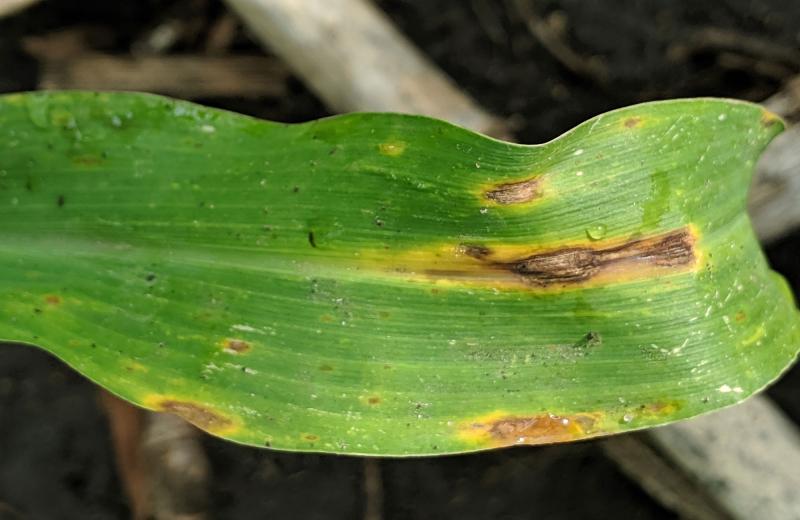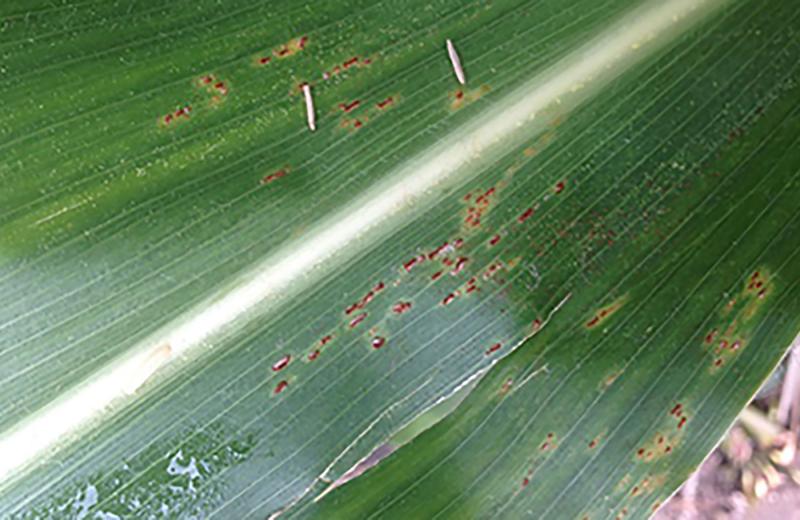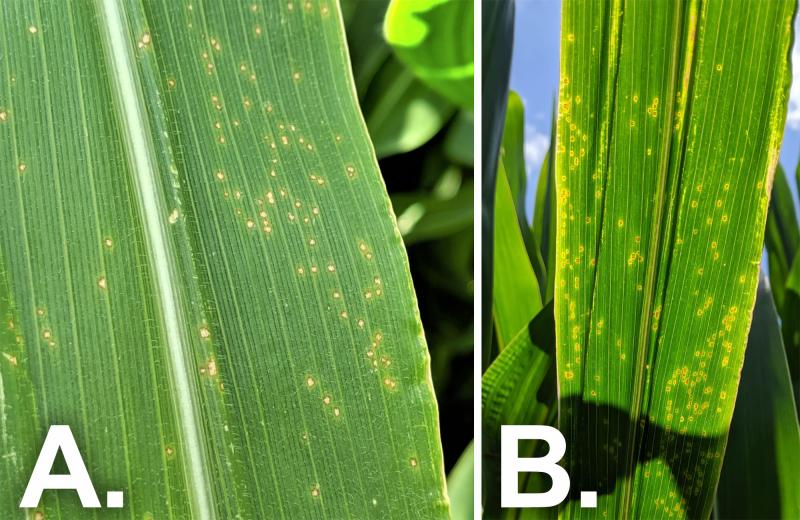Written with contributions by Emmanuel Byamukama, former SDSU Extension Plant Pathologist.
Corn is starting to tassel in several locations across the state. This is also the growth stage when a fungicide may be applied to control fungal leaf diseases. Anthracnose leaf blight, common rust, eye spot, gray leaf spot, and northern corn leaf blight are the common corn fungal diseases which develop in South Dakota. Diseases currently starting to develop are anthracnose leaf blight, common rust and eyespot. Gray leaf spot and northern corn leaf blight tend to develop after tasseling.
Developing Diseases

Anthracnose Leaf Blight
Anthracnose leaf blight is more common in corn on corn fields and tends to develop early in the season. Initial symptoms start as small oval to elongated, water soaked lesions. These enlarge to form lesions with tan centers and dark brown borders with a yellow halo (Figure 1). Lesions can develop on any part of the leaf blade, including leaf margins. Infection of top leaves can lead to top dieback and severe disease on lower leaves can lead to stalk rot development.

Common Rust
Common rust, as the name suggests, is a common fungal disease found in every corn field. This disease is caused by a fungal pathogen Puccinia sorghi, which does not survive in our environment (does not overwinter here) but is blown in from the southern states. It is usually a minor disease and can develop on lower leaves or later in the season on leaves along the field edges. Common rust can be differentiated from southern rust based on the elongated, cinnamon brown pustules that are randomly scattered on the leaves. The developing pustules burst the leaf epidermis producing the cinnamon brown raised blister-like structures that are filled with spores (Figure 2).

Eyespot
Eyespot is another common corn disease that sometimes can reach yield-reducing levels on susceptible hybrids. Initial symptoms start as small translucent circular lesions with yellow halo surrounding the lesions (Figure 3A). Later, lesions expand and have tan centers surrounded by brown ring with a narrow yellow halo. The halo is clearer when the leaf is held against the light (Figure 3B). The lesions can coalesce to form larger lesions especially on maturing corn leaves. This disease is caused by the fungal pathogen, Kabatiella zeae, which survives on corn residue and is splashed onto leaves by rainfall.
Fungicide Strategy
The question often asked is, “Is a fungicide application needed for the diseases developing in corn at this time?”
The disease pressure currently being observed in corn fields is low to necessitate a fungicide. However, this could change based on the susceptibility of the hybrid planted, the weather conditions (frequent rains), and agronomic practices such as corn on corn. Diseases such as gray leaf spot and northern corn leaf blight that develop later in the season can also show up. Research shows chances of return on fungicide investment are higher when diseases are present (>5% severity on ear leaf and leaves above). Research also shows that VT-R2 (tasseling/blister) is the best fungicide timing and gives better returns on investment. Growers are encouraged to scout their fields and also consider the factors mentioned above to decide if a fungicide will be needed. If a fungicide is decided upon, a number of fungicides effective against corn diseases are available in the publication, “Fungicide Efficacy for Control of Corn Diseases.” The fungicide efficacy table is produced by the Corn Pathology Working Group, in the Central region, of which SDSU has contributed data.


